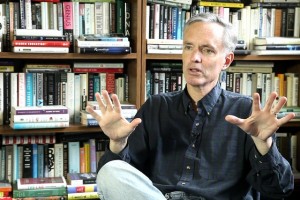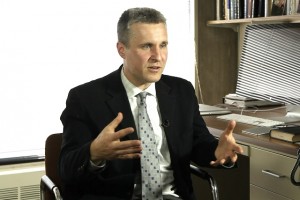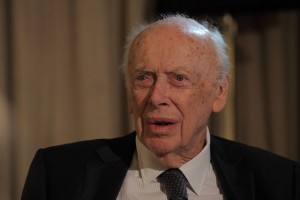Engineering More Effective Antibiotics
Boston University Prof. James Collins on bacterial resistance, active mutagens, and efficacy of biocides
What was the first effective drug against tuberculosis? Has anything changed since the ‘golden era’ in drug discovery? Biology Professor Kim Lewis speaks on the problems that compounds labs face.
There is a strange paradox in the field of antibiotics. The more we know the less we are able to discover new antibiotics. There is actually a joke in the field, “Let us get rid of all clever people, then we’ll go back to discovering antibiotics.” What is the nature of this paradox? In the 40s Selman Waksman discovered the first systematic way of identifying new antibiotics. He made an interesting insightful observation, that there are complex microorganisms, bacteria living in the soil, streptomyces, that, he suspected, fight each other, probably with compounds that are antibiotics. And so he started systematically examining them.
And then rather abruptly the golden era ends in the beginning of the 60s, because of overminding. And it looks like the fate of antibiotic dicovery follows the fate of any gold mining. In the beginning there is a lot of gold, you mine it, and then the gold is mined out, there is no gold left. And that is essentially what happened with discovery based on streptomyces. People were spending most of their effort rediscovering streptomycin and penicillin, or other compounds that were not useful. Then the field decided to switch the focus on synthetic compounds.
Apart from the enormous problem of delivering something inside the bacterial cell there is also a formidable problem of dealing with dormant forms of bacteria cells, which are persisters. All bacteria form a small cell population of dormant spore-like cells, which are persisters. They shut down their metabolism, their targets are inactive. In order to kill a bacterial cell antibiotic has to corrupt its target. The target is inactive – there’s nothing to corrupt. What I would like to talk about is two possible directions in which my laboratory has been working to develop new antibiotics.

Boston University Prof. James Collins on bacterial resistance, active mutagens, and efficacy of biocides

Chemical engineer Martin Z. Bazant on understanding dynamics at intermediate scale, "deionization shocks", and...

One of the discoverers of the structure of DNA on cancer, biochemistry and personalized medicines